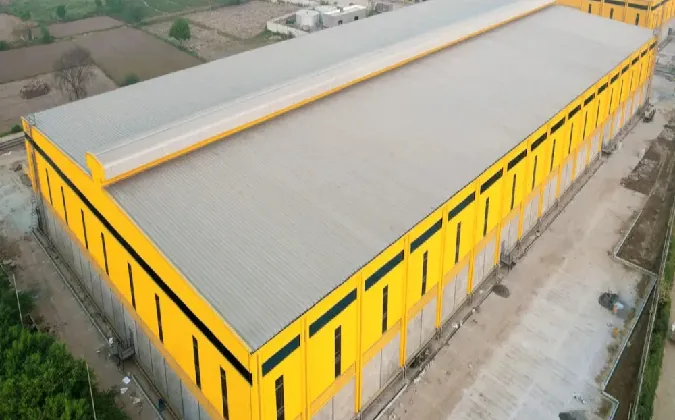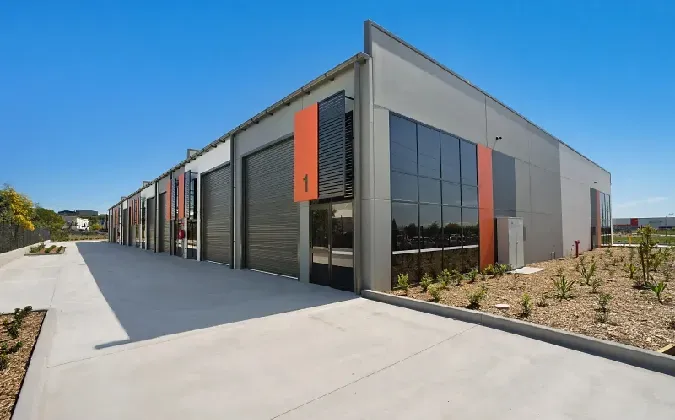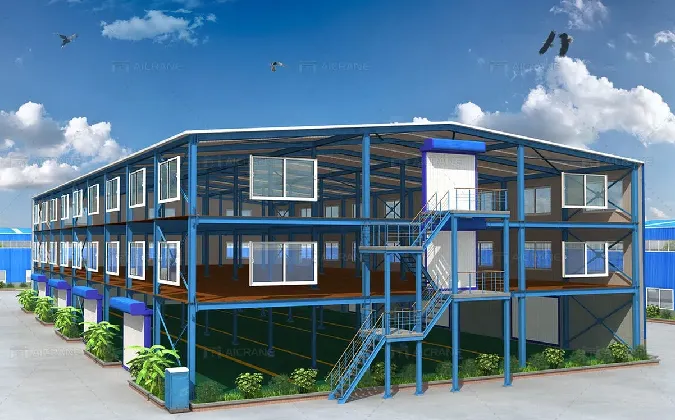- Afrikaans
- Albanian
- Amharic
- Arabic
- Armenian
- Azerbaijani
- Basque
- Belarusian
- Bengali
- Bosnian
- Bulgarian
- Catalan
- Cebuano
- Corsican
- Croatian
- Czech
- Danish
- Dutch
- English
- Esperanto
- Estonian
- Finnish
- French
- Frisian
- Galician
- Georgian
- German
- Greek
- Gujarati
- Haitian Creole
- hausa
- hawaiian
- Hebrew
- Hindi
- Miao
- Hungarian
- Icelandic
- igbo
- Indonesian
- irish
- Italian
- Japanese
- Javanese
- Kannada
- kazakh
- Khmer
- Rwandese
- Korean
- Kurdish
- Kyrgyz
- Lao
- Latin
- Latvian
- Lithuanian
- Luxembourgish
- Macedonian
- Malgashi
- Malay
- Malayalam
- Maltese
- Maori
- Marathi
- Mongolian
- Myanmar
- Nepali
- Norwegian
- Norwegian
- Occitan
- Pashto
- Persian
- Polish
- Portuguese
- Punjabi
- Romanian
- Russian
- Samoan
- Scottish Gaelic
- Serbian
- Sesotho
- Shona
- Sindhi
- Sinhala
- Slovak
- Slovenian
- Somali
- Spanish
- Sundanese
- Swahili
- Swedish
- Tagalog
- Tajik
- Tamil
- Tatar
- Telugu
- Thai
- Turkish
- Turkmen
- Ukrainian
- Urdu
- Uighur
- Uzbek
- Vietnamese
- Welsh
- Bantu
- Yiddish
- Yoruba
- Zulu
ಆಗಸ್ಟ್ . 09, 2025 04:00 Back to list
The landscape of global industry is in constant evolution, demanding infrastructure that is not only robust and functional but also adaptable, sustainable, and technologically advanced. At the core of this demand lies industrial building construction, a critical discipline that shapes the very foundations of manufacturing, logistics, and resource processing. This comprehensive guide will explore the intricacies of modern industrial facilities, from conceptualization and design to cutting-edge fabrication and long-term operational excellence, focusing on the pivotal role of specialized structures like Industrial Crane Steel Buildings.
Current Trends and Future Outlook in Industrial Building Construction
The sector of industrial building construction is undergoing significant transformation, driven by global economic shifts, technological advancements, and an increasing emphasis on environmental responsibility. Key trends include:
- Digitalization and BIM (Building Information Modeling): The adoption of BIM for design, planning, and management is revolutionizing project delivery, enhancing collaboration, reducing errors, and improving overall efficiency. This allows for detailed virtual prototypes before physical construction begins, optimizing material use and scheduling.
- Sustainability and Green Building Practices: There's a growing demand for eco-friendly industrial facilities. This involves incorporating renewable energy sources (solar panels), advanced insulation, rainwater harvesting, and sustainable material choices to reduce operational costs and environmental footprint. LEED (Leadership in Energy and Environmental Design) and BREEAM (Building Research Establishment Environmental Assessment Method) certifications are becoming benchmarks for sustainable industrial structures.
- Prefabrication and Modular Construction: Off-site fabrication of structural components and even entire modules significantly accelerates construction timelines, improves quality control in a factory setting, and minimizes on-site disruption. This approach is particularly beneficial for large-scale industrial projects and remote locations.
- Smart Industrial Buildings: Integration of IoT (Internet of Things) devices, AI, and automation systems for predictive maintenance, energy management, security, and supply chain optimization. These 'smart' features enhance operational efficiency and provide valuable data for facility managers.
- Resilience and Disaster Preparedness: Designing structures to withstand extreme weather events, seismic activity, and other potential disruptions is paramount. This involves advanced structural engineering, redundant systems, and robust material selection to ensure continuity of operations.
The future of industrial building construction is heading towards more integrated, data-driven, and environmentally conscious solutions, creating facilities that are not just places of production but intelligent, adaptive ecosystems.
Technical Parameters and Design Considerations in Industrial Building Design
Effective industrial building design is a complex undertaking that requires meticulous attention to a multitude of technical parameters and engineering principles. The primary goal is to create a structure that is not only aesthetically pleasing but also maximally functional, safe, and cost-efficient over its lifespan.
Key Design Elements:
- Structural Integrity: This is the cornerstone of any industrial facility. Designs must account for various loads:
- Dead Loads: The weight of the building components themselves (steel beams, roofing, walls).
- Live Loads: Variable loads from equipment, machinery, stored materials, and personnel.
- Wind Loads: Forces exerted by wind, crucial for tall structures or those in high-wind zones.
- Snow Loads: Weight of accumulated snow, relevant in colder climates.
- Seismic Loads: Forces generated by earthquakes, requiring specialized seismic design codes (e.g., ASCE 7, Eurocode 8).
- Crane Loads: For structures housing overhead cranes, dynamic loads from lifting and moving heavy objects must be precisely calculated, including impact factors and fatigue considerations.
- Span and Bay Spacing: Optimized to accommodate machinery layouts, material flow, and future expansion. Large clear spans are often preferred for flexibility in internal arrangements.
- Material Selection: The choice of materials significantly impacts durability, cost, and construction speed. Steel is highly favored for its strength-to-weight ratio, recyclability, and ability to be prefabricated. Concrete, masonry, and composite materials also play crucial roles.
- Thermal and Acoustic Performance: Proper insulation (e.g., sandwich panels with high R-values) and ventilation systems are vital for maintaining optimal indoor temperatures and air quality, crucial for both human comfort and machinery operation. Acoustic treatment may be necessary to mitigate noise pollution from heavy machinery.
- HVAC and Utilities Integration: Seamless integration of heating, ventilation, air conditioning, electrical systems, plumbing, and specialized process piping (e.g., for chemicals, gases) is essential.
- Safety Standards: Adherence to local and international building codes (e.g., IBC, AISC, OSHA), fire safety regulations, and egress requirements is non-negotiable.
Expert industrial building design leverages advanced software for structural analysis (e.g., SAP2000, ETABS, STAAD.Pro) and employs highly qualified structural engineers to ensure every aspect of the build meets stringent performance and safety criteria.
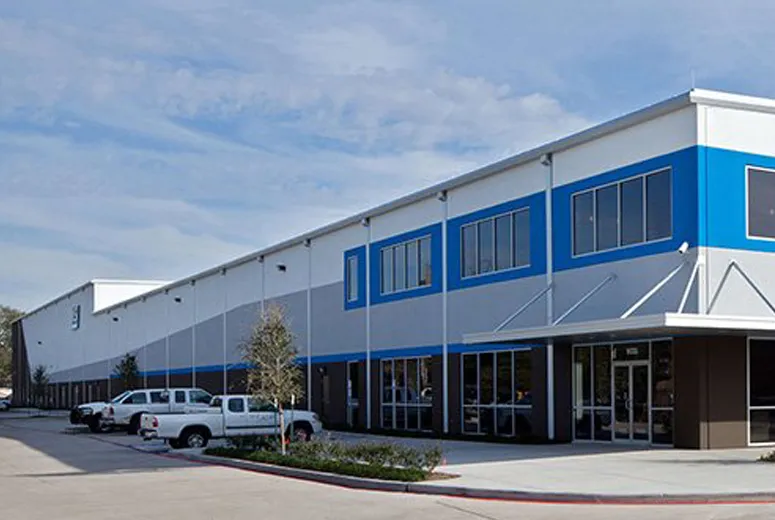
Product Focus: Industrial Crane Steel Buildings
Our flagship product, Industrial Crane Steel Buildings, represents the pinnacle of specialized industrial building construction designed to house and facilitate heavy lifting operations. These structures are specifically engineered to accommodate overhead bridge cranes, gantry cranes, or monorail systems, providing the robust framework necessary for material handling in demanding industrial environments.
Key Features and Advantages:
- Exceptional Strength: Utilizes high-grade structural steel (e.g., Q345B, Q235B, ASTM A36, A572 Gr.50) to support significant crane runway beam loads and dynamic forces.
- Optimized Clear Span: Provides vast, unobstructed internal spaces crucial for the movement of large machinery and materials.
- Customizable Heights: Engineered to specific eave heights and crane hook heights to match operational requirements.
- Durability and Longevity: Designed for a service life typically exceeding 50 years, with proper maintenance. Materials are often hot-dip galvanized or coated with high-performance industrial paints for superior corrosion resistance.
- Cost-Efficiency: Steel construction offers rapid erection times, reducing labor costs and project duration. The material is also 100% recyclable, contributing to sustainability.
- Flexibility: Easily expandable for future growth, and internal layouts can be reconfigured as operational needs change.
- Energy Efficiency: Can be integrated with advanced insulation systems, natural lighting solutions (skylights), and ventilation to minimize operational energy consumption.
Comprehensive Manufacturing Process for Industrial Crane Steel Buildings
The manufacturing of Industrial Crane Steel Buildings is a highly precise and standardized process, ensuring the structural integrity and long-term performance required for heavy industrial applications. Our commitment to quality adheres to international standards like ISO 9001 for quality management and AWS D1.1 for welding, alongside AISC (American Institute of Steel Construction) specifications for design and fabrication.
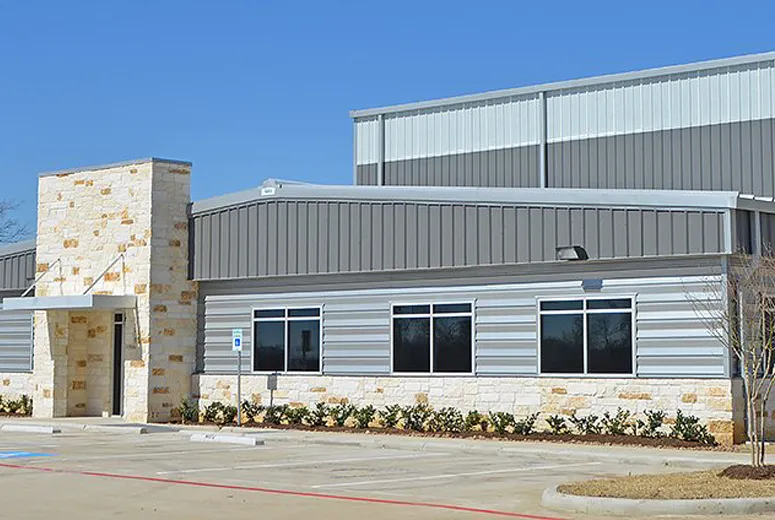
Process Flow Explained:
- Design & Engineering (Conceptualization & Detailed Blueprint):
- Input: Client requirements, site conditions, crane specifications (capacity, span, travel).
- Process: Our certified structural engineers use advanced CAD and BIM software to create detailed architectural and structural drawings. This includes calculating all load types (dead, live, wind, seismic, crane dynamic loads), selecting appropriate steel grades (e.g., Q345B for main structures, Q235B for secondary elements), and designing connections.
- Output: Approved shop drawings, fabrication plans, and material lists.
- Material Procurement (High-Grade Steel Sourcing):
- Process: Steel plates, H-beams, C-channels, angles, and other sections are sourced from reputable mills. Materials undergo initial quality checks upon arrival, including material test certificates (MTCs) verification to confirm chemical composition and mechanical properties align with standards like ASTM A36, A572 Gr.50.
- Cutting & Shaping (Precision Fabrication):
- Process: Utilizing advanced CNC (Computer Numerical Control) cutting machines (laser, plasma, oxy-fuel) to precisely cut steel plates and sections according to shop drawings. Bending and forming operations are performed for complex geometries.
- Key Node: Precision is critical here, impacting fit-up and welding quality.
- Drilling & Punching (Connection Point Preparation):
- Process: Automated drilling machines create precise holes for bolted connections. Punching may be used for lighter gauge materials.
- Component Assembly & Welding (Structural Integration):
- Process: Individual cut and drilled components are pre-assembled into larger sections (e.g., columns, beams, trusses) on jigs to maintain dimensional accuracy. Skilled welders perform high-quality welding (e.g., Submerged Arc Welding (SAW), Flux-Cored Arc Welding (FCAW)) following AWS D1.1 standards.
- Key Node: Welding quality is paramount for structural integrity. Each weld is critical.
- Quality Control & Inspection (Rigorous Assurance):
- Process: Comprehensive inspection at various stages:
- Dimensional Checks: Verifying component dimensions against drawings (tolerance adherence).
- Weld Inspection: Visual inspection, Magnetic Particle Testing (MPT), Ultrasonic Testing (UT), and Radiographic Testing (RT) for critical welds to detect internal flaws. This adheres to ISO 17637 (visual inspection), ISO 17640 (UT), and ISO 17636 (RT).
- Material Traceability: Ensuring all materials are traceable to their MTCs.
- Process: Comprehensive inspection at various stages:
- Surface Preparation & Coating (Corrosion Protection):
- Process: Steel surfaces are cleaned via shot blasting (to SA 2.5 standards) to remove rust, mill scale, and contaminants, creating an optimal surface for paint adhesion. A multi-layer coating system is then applied, typically involving a zinc-rich primer, an epoxy intermediate coat, and a polyurethane topcoat for superior corrosion resistance and aesthetic finish. Hot-dip galvanization (to ASTM A123) may be applied for maximum corrosion protection in highly aggressive environments (e.g., petrochemical, marine).
- Key Node: Proper surface prep is crucial for coating longevity.
- Pre-shipment Assembly & Final Inspection (Readiness Check):
- Process: Larger assemblies may be temporarily erected in the factory to ensure perfect fit-up before disassembly for shipping. All components are tagged, bundled, and inspected one last time.
- Packaging & Logistics (Safe Transport):
- Process: Components are carefully packaged to prevent damage during transit. Detailed packing lists and erection guides are prepared for efficient on-site assembly.
Our adherence to strict manufacturing protocols and international standards (e.g., ISO, ANSI, ASTM) ensures that every Industrial Crane Steel Building we produce offers exceptional performance, a projected service life of 50-70 years, and minimal maintenance requirements.
Applicable Industries and Advantages in Typical Scenarios:
- Petrochemical Industry: Demands robust, corrosion-resistant structures for housing heavy equipment and processing units. Our buildings, often with specialized coatings or galvanization, excel in these corrosive environments, ensuring longevity and safety.
- Metallurgy & Heavy Manufacturing: High heat, heavy loads, and abrasive conditions. Our steel buildings are designed to withstand extreme temperatures and house massive machinery, with integrated crane systems crucial for handling molten metals, large castings, and fabricated steel components.
- Power Generation: Facilities require expansive, durable structures for turbine halls, boiler houses, and equipment storage. Our solutions provide the necessary clear spans and load-bearing capacities.
- Mining & Mineral Processing: Harsh, remote environments with heavy machinery. Our pre-engineered solutions offer rapid deployment and extreme durability against abrasive dust and heavy loads.
- Warehousing & Logistics (especially for heavy goods): industrial flex building structures designed with overhead cranes significantly improve material flow efficiency, allowing for vertical storage and rapid loading/unloading of large or heavy items, optimizing space utilization.
- Shipbuilding & Aviation: Requires very large, column-free spaces for assembly and maintenance of massive structures. Our custom-designed large-span buildings provide ideal solutions.
In these scenarios, our buildings offer advantages like superior energy efficiency through optimized natural lighting and ventilation design, reduced foundation costs due to lighter steel structures compared to concrete, and excellent seismic performance, making them a wise long-term investment.
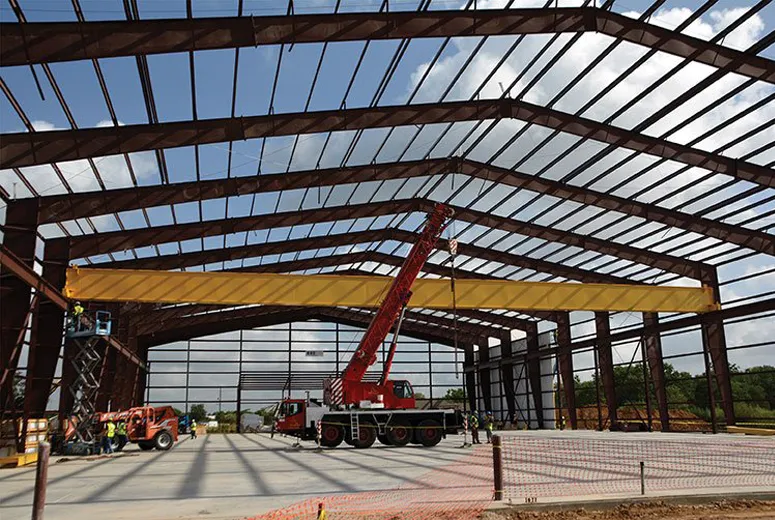
Customized Solutions and Application Cases
Every industrial project is unique, with specific operational demands, site constraints, and budgetary considerations. Recognizing this, we specialize in providing highly customized industrial flex building solutions, ensuring that the final structure perfectly aligns with our client's vision and requirements. Our approach involves a collaborative design process, leveraging our deep expertise in structural engineering and industrial logistics.
The Customization Process:
- Needs Assessment: Detailed discussion with the client to understand their production processes, equipment layout, material flow, future expansion plans, and budget.
- Site Analysis: Evaluation of geographical location, soil conditions, climatic data (wind, snow, seismic zones), and local building codes.
- Conceptual Design & Feasibility Study: Developing initial layouts and structural concepts, providing cost estimates, and analyzing project feasibility.
- Detailed Engineering & Design: Refining the design with precise calculations, material specifications, and integration of specialized features like crane systems, mezzanine floors, ventilation, and lighting.
- Manufacturing & Fabrication: Producing custom components in our state-of-the-art facility, ensuring strict quality control.
- Installation & Commissioning: Providing comprehensive support, from supervision to full turnkey installation services, ensuring timely and safe project completion.
Application Cases & Customer Feedback:
We have a proven track record of successful industrial building construction projects across diverse industries, reflecting our commitment to quality and client satisfaction. While specific client names are confidential, the following types of projects illustrate our capabilities:
- Heavy Machinery Assembly Plant (Midwest, USA): Designed and constructed a 150,000 sq ft facility with multiple 50-ton overhead bridge cranes. The client reported a 25% increase in assembly line efficiency due to optimized material flow and enhanced structural stability. "The precision of their steelwork and the seamless integration of our heavy cranes truly transformed our operations," noted the Plant Manager.
- Mining Equipment Maintenance Workshop (Western Australia): Delivered a remote 80,000 sq ft workshop building with extreme wind load resistance and specialized dust control features, housing 3 x 30-ton gantry cranes. The prefabrication significantly reduced on-site construction time by 40% in a challenging logistical environment. The client praised the rapid deployment and robust design, crucial for their remote operations.
- Recycling Facility (Northern Europe): A 100,000 sq ft industrial flex building designed to accommodate both sorting lines and heavy baling machinery, featuring a 20-ton crane for material handling. The building incorporated advanced thermal insulation and natural ventilation, resulting in a 30% reduction in heating/cooling costs compared to their previous facility. "Their sustainable design approach helped us achieve our environmental targets while building a highly functional space," stated the Operations Director.
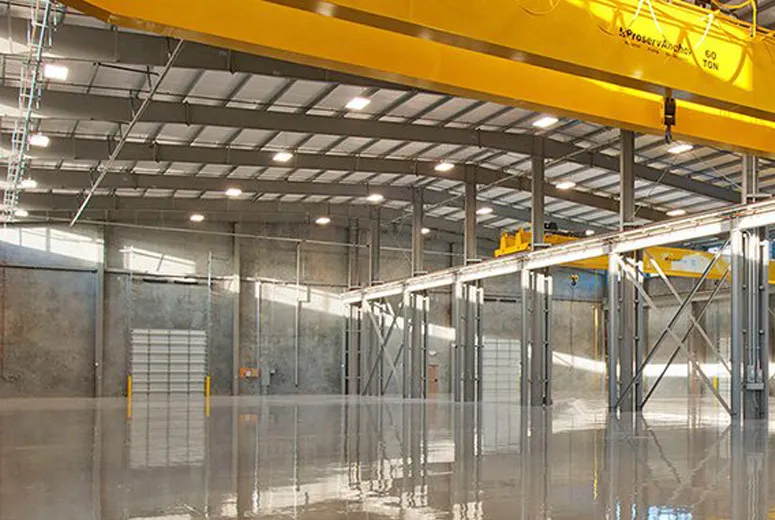
Manufacturer Comparison: Choosing the Right Partner for Industrial Building Construction
Selecting the right manufacturer for your industrial building construction project is paramount to its success. It's not just about cost, but about expertise, experience, and reliability. When evaluating potential partners for your Industrial Crane Steel Buildings or any substantial industrial facility, consider the following:
- Technical Expertise & Engineering Capabilities: Look for a manufacturer with a strong in-house engineering team specializing in structural steel, industrial loads, and complex crane integration. Verify their use of advanced design software and adherence to international building codes (e.g., IBC, Eurocodes, AISC).
- Manufacturing Excellence & Quality Control: A reputable manufacturer will have state-of-the-art fabrication facilities and a robust quality management system (e.g., ISO 9001 certified). Inquire about their welding procedures (e.g., AWS D1.1 compliance), material sourcing, and inspection protocols (NDT, dimensional checks).
- Experience & Track Record: Review their portfolio of completed projects, especially those similar in scope and complexity to yours. Longevity in the industry (e.g., "over two decades of experience") and a history of successful deliveries are strong indicators of reliability.
- Customization & Flexibility: The ability to provide bespoke solutions, adapt to specific site conditions, and integrate diverse equipment requirements is crucial for optimal industrial flex building design.
- Customer Support & After-Sales Service: Evaluate their responsiveness during the quotation phase, project management capabilities, and post-installation support, including warranty terms and availability of spare parts or maintenance guidance.
- Certifications & Affiliations: Industry certifications (e.g., AISC Quality Certification, CE marking for Europe) and memberships in professional organizations (e.g., Steel Structures Painting Council - SSPC, American Welding Society - AWS) attest to their adherence to best practices and quality standards.
- Financial Stability & Reputation: A financially stable company ensures project continuity and long-term warranty support. Online reviews, client testimonials, and industry references can provide insights into their reputation.
Our company prides itself on excelling in all these areas, offering unparalleled expertise, a rigorous quality assurance process, and a customer-centric approach that ensures project success from conception to completion.
Essential Parameters for Industrial Building Construction
Below is a table summarizing key parameters often considered in industrial building construction projects. These values can vary significantly based on industry, location, and specific operational needs.
| Parameter | Typical Range/Consideration | Impact on Design & Cost |
|---|---|---|
| Building Clear Span | 15m - 60m+ (50ft - 200ft+) | Larger spans require deeper beams/trusses, increasing steel weight and cost. Crucial for open layouts. |
| Eave Height | 6m - 30m+ (20ft - 100ft+) | Determined by machinery height, crane hook height, and vertical storage needs. Taller buildings require stronger frames and more expensive cladding. |
| Crane Capacity | 5 tons - 300 tons+ | Directly impacts structural design of columns, beams, foundations, and bracing. Requires specialized runway beams and connection details. |
| Wind Load Design (Base Velocity) | 100 km/h - 250 km/h+ (60 mph - 155 mph+) | Based on geographical location (wind zones). Higher wind speeds demand stronger framing and bracing, potentially increasing steel tonnage. |
| Snow Load (Ground Snow Load) | 0.5 kN/m² - 5 kN/m²+ (10 psf - 100 psf+) | Based on geographical location. Higher snow loads require stronger roof framing and purlins. |
| Seismic Design Category | A to F (low to very high seismic risk) | Determines the required seismic detailing and lateral force resisting systems. Category D, E, F require significant additional engineering and materials. |
| Floor Live Load Capacity | 2.5 kN/m² - 25 kN/m²+ (50 psf - 500 psf+) | Depends on stored materials, equipment, and traffic. Affects concrete slab thickness, sub-base preparation, and foundation design. |
| Insulation R-value (Roof/Wall) | R-13 to R-40+ (for energy efficiency) | Higher R-values improve thermal performance, reducing HVAC costs. Affects choice of insulation material (fiberglass, rockwool, PIR/PUR panels) and thickness. |
| Fire Rating | 1-hour to 4-hour+ | Required by local codes. Achieved through fire-resistant coatings, encasements, or specific material choices. Increases cost and complexity. |
| Corrosion Protection | Primer only to Hot-dip Galvanization + Multi-coat Paint System | Based on environmental corrosivity. More aggressive environments require more robust and expensive coating systems. |
Frequently Asked Questions (FAQs) about Industrial Building Construction
- What is the typical lifespan of an Industrial Crane Steel Building?
With proper design, quality materials, and regular maintenance, an Industrial Crane Steel Building can have a service life exceeding 50 to 70 years. Factors like environmental conditions (corrosivity), load cycles on crane runways, and quality of initial fabrication and coatings significantly influence longevity. - What are the primary advantages of steel over concrete for industrial buildings?
Steel offers superior strength-to-weight ratio, allowing for larger clear spans and lighter foundations. It enables faster construction due to prefabrication, is highly adaptable for future expansion, and is 100% recyclable, making it a more sustainable choice. Concrete typically offers better fire resistance in its raw form and higher thermal mass. - How are crane loads calculated for steel buildings, and what standards apply?
Crane loads include static weight (dead load), dynamic forces from lifting and acceleration/deceleration (live load, impact factor), and lateral thrust from crane movement. These are calculated based on crane capacity, bridge/trolley weight, and operational speed. Standards like AISC Design Guide 7 (Industrial Buildings, Roofs, and Platforms for Industrial Facilities), CMAA Specification 70 (Specifications for Top Running Bridge & Gantry Type Multiple Girder Electric Overhead Traveling Cranes), and local building codes (e.g., ASCE 7 for minimum design loads) are applied. - What are common steel grades used in industrial building construction?
Common steel grades include ASTM A36 (general structural steel), ASTM A572 Grade 50 (high-strength low-alloy steel for main members), and often Chinese standards like Q235B (equivalent to A36) and Q345B (equivalent to A572 Gr.50) for various components due to their balance of strength and weldability. The choice depends on load requirements and cost-effectiveness. - What is the typical delivery and installation timeline for a custom Industrial Crane Steel Building?
The timeline varies greatly with project size and complexity. For a medium-sized (e.g., 50,000 sq ft) custom building, design could take 4-8 weeks, fabrication 8-16 weeks, and on-site erection 6-12 weeks. Large or complex projects will take longer. Our pre-engineered approach significantly speeds up this process compared to traditional construction. - What kind of quality control measures are in place during fabrication?
Our fabrication process involves stringent quality control at every stage. This includes material traceability, dimensional checks using precision instruments, fit-up inspections, and non-destructive testing (NDT) of welds such as Visual Inspection (VI), Magnetic Particle Testing (MPT), Ultrasonic Testing (UT), and occasionally Radiographic Testing (RT) on critical connections. All processes adhere to ISO 9001 and AWS D1.1 standards. - How do you ensure corrosion resistance for steel buildings in harsh environments?
For harsh environments (e.g., coastal, chemical plants, high humidity), we recommend robust corrosion protection systems. This typically involves abrasive blast cleaning (to SA 2.5), followed by a multi-layer coating system (e.g., zinc-rich primer, epoxy intermediate, polyurethane topcoat) with a total dry film thickness (DFT) of 180-250 microns or more. For extreme conditions, hot-dip galvanization (HDG) conforming to ASTM A123 is applied to structural members, offering superior long-term protection.
Reliability and Support: Our Commitment to Trustworthiness
Building a successful industrial facility requires more than just high-quality components; it demands a partner who instills confidence through every phase of the project. Our commitment to trustworthiness in industrial building construction is reflected in our transparent processes, robust guarantees, and comprehensive customer support.
- Quality Assurance & Certifications: We operate under a rigorous ISO 9001 certified Quality Management System, ensuring consistent high standards from design to delivery. Our fabrication processes comply with international norms such as AWS D1.1 for welding, AISC (American Institute of Steel Construction) for structural steel design and fabrication, and relevant ASTM standards for materials. This adherence provides an independent verification of our capabilities and product reliability.
- Warranty & Guarantee: We stand behind the durability and performance of our Industrial Crane Steel Buildings. A structural warranty of 20-25 years is standard for our main steel framework, covering material defects and fabrication flaws. Our coating systems typically carry warranties ranging from 5-15 years, depending on the chosen system and environmental exposure. Specific terms are detailed in project contracts.
- Delivery Timelines: We understand the importance of project schedules. Our advanced planning, prefabrication capabilities, and efficient logistics ensure competitive delivery times, often significantly faster than traditional construction methods. We provide clear, realistic timelines and communicate proactively throughout the manufacturing and shipping phases.
- After-Sales Support & Customer Service: Our relationship doesn't end with project completion. We offer comprehensive after-sales support, including technical assistance for erection, maintenance guidelines, and availability of spare parts for components like fasteners or cladding. Our dedicated customer service team is available to address any queries or concerns post-installation, ensuring long-term operational satisfaction. We pride ourselves on a high rate of repeat business, a testament to our ongoing client support and satisfaction.
- Industry Partnerships: We collaborate with leading architects, engineering firms, and general contractors globally, further solidifying our position as a trusted partner in large-scale industrial projects. Our strong network of suppliers ensures access to premium raw materials and components, which directly translates to the superior quality of our finished structures.
Conclusion: Building the Future of Industry with Advanced Steel Solutions
The landscape of industrial building construction is rapidly evolving, driven by the imperative for greater efficiency, sustainability, and adaptability. From the foundational principles of industrial building design to the intricate details of manufacturing specialized structures like Industrial Crane Steel Buildings, the demand for robust, high-performance facilities has never been greater. Our commitment to leveraging cutting-edge technology, adhering to stringent quality standards, and providing customized solutions ensures that our clients receive not just a building, but a strategic asset that enhances their operational capabilities and future-proofs their investments. By integrating advanced engineering, superior materials, and a deep understanding of industry-specific needs, we empower businesses across various sectors to achieve their production and logistical goals with unparalleled reliability and long-term value. As industries continue to grow and transform, innovative and flexible structures, including the sophisticated industrial flex building concept, will remain at the forefront of driving global economic progress.
References and Further Reading:
- AISC Publications: Provides comprehensive specifications and design guides for structural steel buildings. https://www.aisc.org/
- Building Information Modeling (BIM) Forum: Discussions and standards related to BIM implementation in construction. https://www.bimforum.org/
- Journal of Construction Engineering and Management (ASCE): Academic papers on construction techniques and project management. https://ascelibrary.org/journal/jcemtq
- World Steel Association: Resources on steel production, sustainability, and applications in construction. https://www.worldsteel.org/
- Construction Management Association of America (CMAA): Resources for construction management best practices. https://www.cmaanet.org/
-
Steel Frame Modular Construction for Housing
NewsAug.07,2025
-
Steel Construction Factory Processes
NewsAug.07,2025
-
Portal Frame Shed for Sale: Delivery Options
NewsAug.07,2025
-
Metal Workshops for Sale: Insulation Solutions
NewsAug.07,2025
-
Metal Steel Building Manufacturers: Post-Construction Services
NewsAug.07,2025
-
Metal Garage Shed Kits: Size Options
NewsAug.07,2025
Products categories
Our Latest News
We have a professional design team and an excellent production and construction team.






